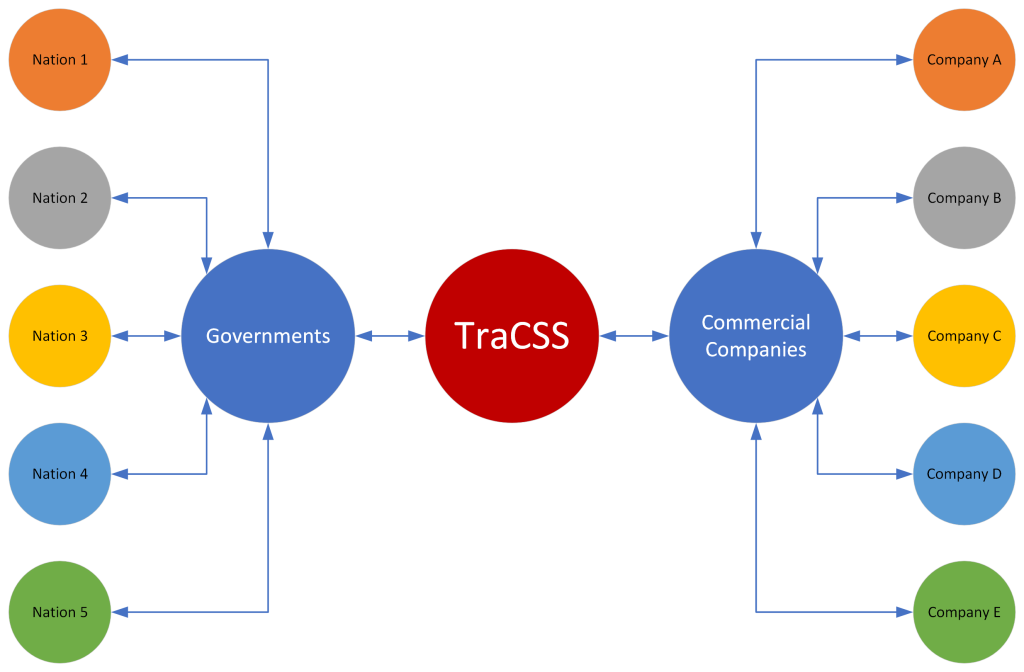The Stage
Within the last 2 years, a new system for space traffic coordination has been conceptualized by the U.S. Department of Commerce, Department of Defense, and commercial industry partners. Dubbed the Traffic Coordination System for Space, a.k.a TraCSS, this new system aims to bring together all parties that operate in space to avoid catastrophic collisions of assets or debris. Historically, organizations such as the DoD and NASA have their dedicated collision avoidance systems and teams in place. With the extreme influx of commercial satellites, the industry now faces a challenge to ensure operational safety on orbit.
Facing New Challenges
For commercial and government entities within the United States, coordination is relatively straight forward. Inter-agency efforts address government organizations that operate in space, while the Department of Commerce will address satellite operators in the commercial realm.
How are foreign nations and foreign commercial operators addressed? As of now, that is the focus area for TraCSS administrators. Without foreign cooperation, there are glaring holes in the efficacy of this type of traffic coordination system.
Many countries already work with U.S. agencies when it comes to traffic coordination; notably JAXA and the European Space Agency (ESA). But what about those that don’t? Major efforts will be needed to convince countries such as Iran and China to join such a system. As it stands, the trust is just not enough.
Points of Exposure
For the sake of the argument, let’s assume all countries that participate in space operations join and contribute their ephemeris data to TraCSS. TraCSS will have opened the floodgates to potential security vulnerabilities for many countries and commercial operators if not implemented with direct considerations for data integrity and cybersecurity.
The most secure vault is one that doesn’t have a door. Unfortunately that makes the vault useless and you cannot access the valuables within. In the case of TraCSS, the system relies on many points of entry to share critical tracking data.

With so many entities creating connections to TraCSS, how will they ensure sensitive data is not leaked or otherwise stolen? Creating more interfaces creates more surface area for cyber attackers to exploit. TraCSS is still relatively new so these questions are still being considered. As of April 1st, 2024, it was announced that the Parsons Corporation will spearhead the cloud infrastructure, cybersecurity, and system administration of TraCSS.
References: